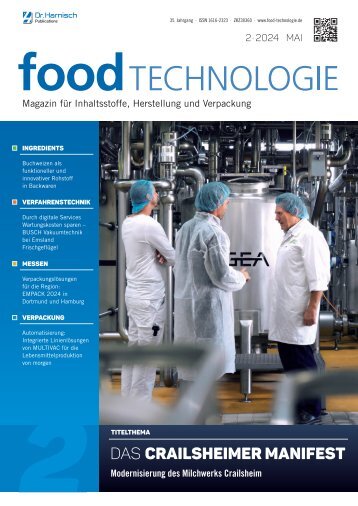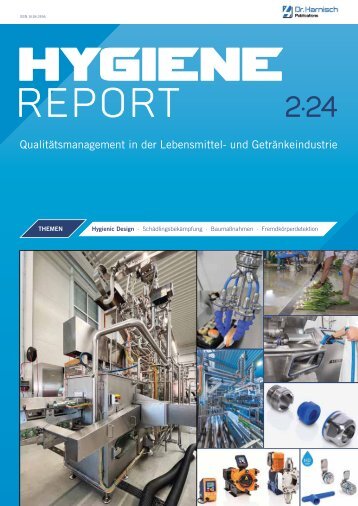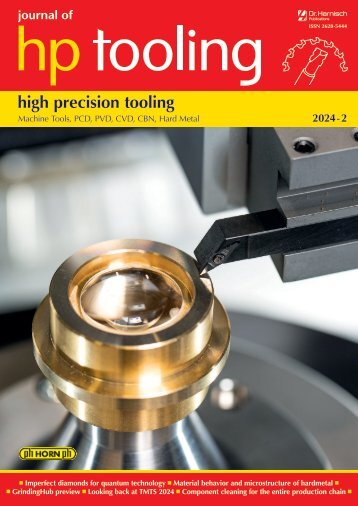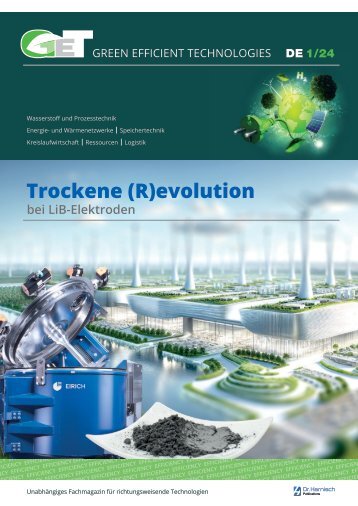GET – GREEN EFFICIENT TECHNOLOGIES – English Language
- Text
- Harnischcom
- Materials
- Valve
- Electricity
- Grid
- Valves
- Technologies
- Efficient
- Pumps
- Hydrogen
- Efficiency
Components Hydrogen
Components Hydrogen Bipolar plates & the multi-stage CellForm ® technology Simon Brugger For the hydrogen technology to succeed in economy, mobility, and society, big challenges are yet to be tackled. These are for instance factors like costs, efficiency, and suitability for series production. Progress in these areas is only made possible through intensive research and development efforts. The focus of CellForm hereby lies on the development of the key component of the hydrogen technology, the bipolar plate. The bipolar plate The hydrogen technology consists of two principles: the electrolytic splitting of water into hydrogen and oxygen (electrolysis) by means of external energy and the usage of the energy through the reversed chemical reaction (fuel cells). These electrochemical processes take place in every single cell which are stacked on top of each other to a so-called stack. The main part of this stack is the bipolar plate, consisting of two very thinly formed metal sheets welded together. Depending on the application, several hundred bipolar plates are needed for a single stack. As the name („bi“) suggests, a bipolar plate serves as a basis for the two poles of a fuel cell: the negative Fig. 2: Metallic bipolar plate under a measuring device anode plate and the positive cathode trons emitted by the hydrogen from plate. The plates are responsible for the anode via an electrical device to the distribution and reaction indication of the gases in the fuel cell as migrate through the membrane and the cathode. The remaining protons they control the chemical reaction finally react with the oxygen atoms of hydrogen and oxygen to electrical to form water. A cooling medium for energy and water. They also ensure, temperature control of the individual for instance, electrical contact between the individual cells and sepa- welded individual plates. The channel cells is passed between the tightly rate the membrane electrode assemblies (MEA). The membrane electrode that serves as the contact surface structure of the so-called flow field unit serves as a semi-permeable between hydrogen and oxygen and membrane which is only permeable to protons and forces the elec- can be seen in Fig. 3. Hydrogen – advantages and disadvantages Fig. 1: CellForm’s metallic bipolar plates Hydrogen has many advantages as an energy carrier compared to alternative technologies such as batteries. For example, the resources required are significantly more sustainable in terms of extraction and recycling, the refuelling time in the mobile sector is significantly shorter, and hydrogen-based energy chains have a potentially lower TCO. However, the main advantage of hydrogen can be derived on the basis of the energy transition: In a future with 28 GREEN EFFICIENT TECHNOLOGIES 2022
Components Hydrogen energy from fully renewable sources, our society faces a fundamental challenge, namely the local and temporal differences between energy production and usage. Energy generation from wind and sun – in contrast to nuclear energy and coal-fired energy – does not always match with our usage patterns. This presents us with the task of storing energy on a large scale in order to transport and use it time-independent. Under the given conditions, the only solution to this task is hydrogen. At the same time, hydrogen has a major disadvantage compared to batteries when it comes to the overall efficiency. Hydrogen is produced sustainably by means of electrolysis and returned to its original energy state in the fuel cell. Although this conversion results in the advantages mentioned above, a large part of the original primary energy is lost. This disadvantage is the central problem that must be solved in the best possible way. Material aspect Bipolar plates are mainly made of metallic and graphite materials. The different materials are associated with different properties and advantages for the functionality of the bipolar plates. Due to slight efficiency advantages and a lack of manufacturing methods for competitive metallic bipolar plates, the graphite alternative dominated in the past. However, especially in sophisticated applications, graphite bipolar plates have significant volumetric and gravimetric deficits compared to metallic variants. Graphite is also very brittle and can break easily. Nevertheless, graphite plates are often used in stationary applications where installation space is not a limiting factor. Regarding the cost perspective, metallic plates are in a leading position. With the right manufacturing method, sheet thicknesses can be further reduced to as little as 0.05 mm. In this range, metal is at a completely different price level than graphite. With the fact that several hundred bipolar plates are used for a single stack, the cost effect on Fig. 3: flow field of a bipolar plate the final application is enormous. Another advantage of the metallic variant is that the material has a positive influence on the cold-start capability of the fuel cell. Due to the corrosive behaviour of the metallic material, the bipolar plates are coated with e. g. chromium nitride. This is usually done with a thermochemical treatment. The CellForm ® technology was developed for metallic bipolar plates and can form and weld both pre-coated and post-coated plates. Production of the bipolar plates There are several production technologies for bipolar plates depending on the materials and the applications. They vary in terms of cycle time, filigree of the flow field and costs. A finished bipolar plate consists of an anode and a cathode, which are formed separately. The two individual pieces are then tightly welded together. The difficulty in producing the bipolar plates lies in the extremely thin sheet thickness. Forming with such a thin starting sheet and such a precise and demanding geometry of the channel structure quickly leads to cracks due to physical restrictions, which makes the bipolar plate unusable. As mentioned before, the challenge for manufacturers of bipolar plates lies the high-quality requirements with low error tolerances, which must be guaranteed in series production with high quantities. Only those who fulfil this requirement will be able to succeed in this growing and competitive market. There are several processes for the production of bipolar plates, which are still in development. Many manufacturing processes will be limited in their output quantity for future large-scale production due to physical restrictions (e. g. heat generation). This problem is not yet apparent with small quantities but will become more and more apparent in the coming years with higher demand. CellForm relies on a self-developed multi-stage forming process that can be easily scaled. The scalability of the manufacturing process determines the production costs and price of the individual bipolar plate and thus significantly influences the attractiveness of the climate-friendly hydrogen technology as a whole. The Author: Simon Brugger, CEO CellForm GmbH, Baienfurt, Germany GREEN EFFICIENT TECHNOLOGIES 2022 29
- Seite 1 und 2: GREEN EFFICIENT TECHNOLOGIES 2022 H
- Seite 3 und 4: Editorial Hydrogen in the atmospher
- Seite 5 und 6: HAMPRO® HIGH-PRESSURE PROCESS TECH
- Seite 7 und 8: HOW EFFICIENT IS YOUR HYDROGEN COMP
- Seite 9 und 10: Leading article combustible waste (
- Seite 11 und 12: NEW: THE ELECTRIC STEAM GENERATOR [
- Seite 13 und 14: Cover story Fig. 3: In the course o
- Seite 15 und 16: From the research Hydrogen operate
- Seite 17 und 18: From the research Hydrogen Hydrogen
- Seite 19 und 20: Pumps and systems Seawater desalina
- Seite 21 und 22: Driving the world Intelligent power
- Seite 23 und 24: Compressors and systems Hydrogen -
- Seite 25 und 26: Compressors and systems Biomethane
- Seite 27: Compressors and systems Biomethane
- Seite 31 und 32: FILTECH Fig. 4: A total of eight en
- Seite 33 und 34: Components Elastomer seals and biol
- Seite 35 und 36: lit modular casing UMPE less steel,
- Seite 37 und 38: Components Radar sensor Fig. 3: The
- Seite 39 und 40: Components 3-phase decanter Fig. 2:
- Seite 41 und 42: Components Sustainable concrete the
- Seite 43 und 44: Trade fairs and events VALVE WORLD
- Seite 45 und 46: Trade fairs and events FILTECH 2023
- Seite 47 und 48: Companies - Innovations - Products
- Seite 49 und 50: Companies - Innovations - Products
- Seite 51 und 52: Companies - Innovations - Products
- Seite 53 und 54: Companies - Innovations - Products
- Seite 55 und 56: Brand name register NETZSCH Pumpen
- Seite 57 und 58: Come and see for yourself: www.harn
Unangemessen
Laden...
Magazin per E-Mail verschicken
Laden...
Einbetten
Laden...




























































































































































































































































































